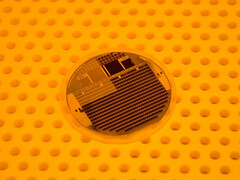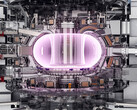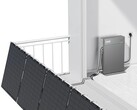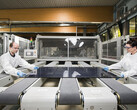Solar modules that rely on perovskite instead of silicon can already achieve an efficiency of up to 26 percent - and on a large scale at affordable prices. This puts the calcium and titanium mineral ahead of familiar solar systems, which typically achieve 20 percent.
And that's not even the end of the story. If the technologies are combined, 40 percent should be within reach. Almost any roof could then cover private electricity consumption.
Unfortunately, there is a problem with the lifespan. Solar cells made of perovskite begin to lose their efficiency after a few months, or after a year at the latest, because the sensitive structure degrades.
Solar modules made of silicon, on the other hand, can continue to operate at 80 percent of their original output even after 20 years on the roof. By then, the acquisition costs will have long been amortized and electricity will be generated at unbeatable production costs.
And that is not just an advertising promise. The first large systems are just reaching this age and are still in operation - even if this does not apply to all old modules, of course.
A study involving MIT and private companies now shows a way to significantly improve perovskite or so-called tandem solar cells made of perovskite and silicon.
What is really exciting is that the technology developed addresses two points at once. The operating life can be increased, and the efficiency further improved in a single step.
To do this, the sensitive surface of the mineral, which decomposes when exposed to sunlight, is immersed in a salt bath. The lye with hexylammonium bromide closes defects in the lattice structure and also forms a fine film on the surface.
The resulting even purer structure offers a little more efficiency. Above all, however, the points of attack that are otherwise responsible for the dissolution of the perovskite crystal during the conversion of light into electricity are closed.
The experimentation is far from over. Depending on the composition of the perovskite-based solar modules and the solution of different salts used, even more convincing results are expected.
According to those involved, the implementation for market-ready production could be realized in a few years. And perhaps in 30 years' time there will be large solar systems with 20-year-old tandem cells that will still produce electricity fairly cheaply. A nice prospect, after all.



















